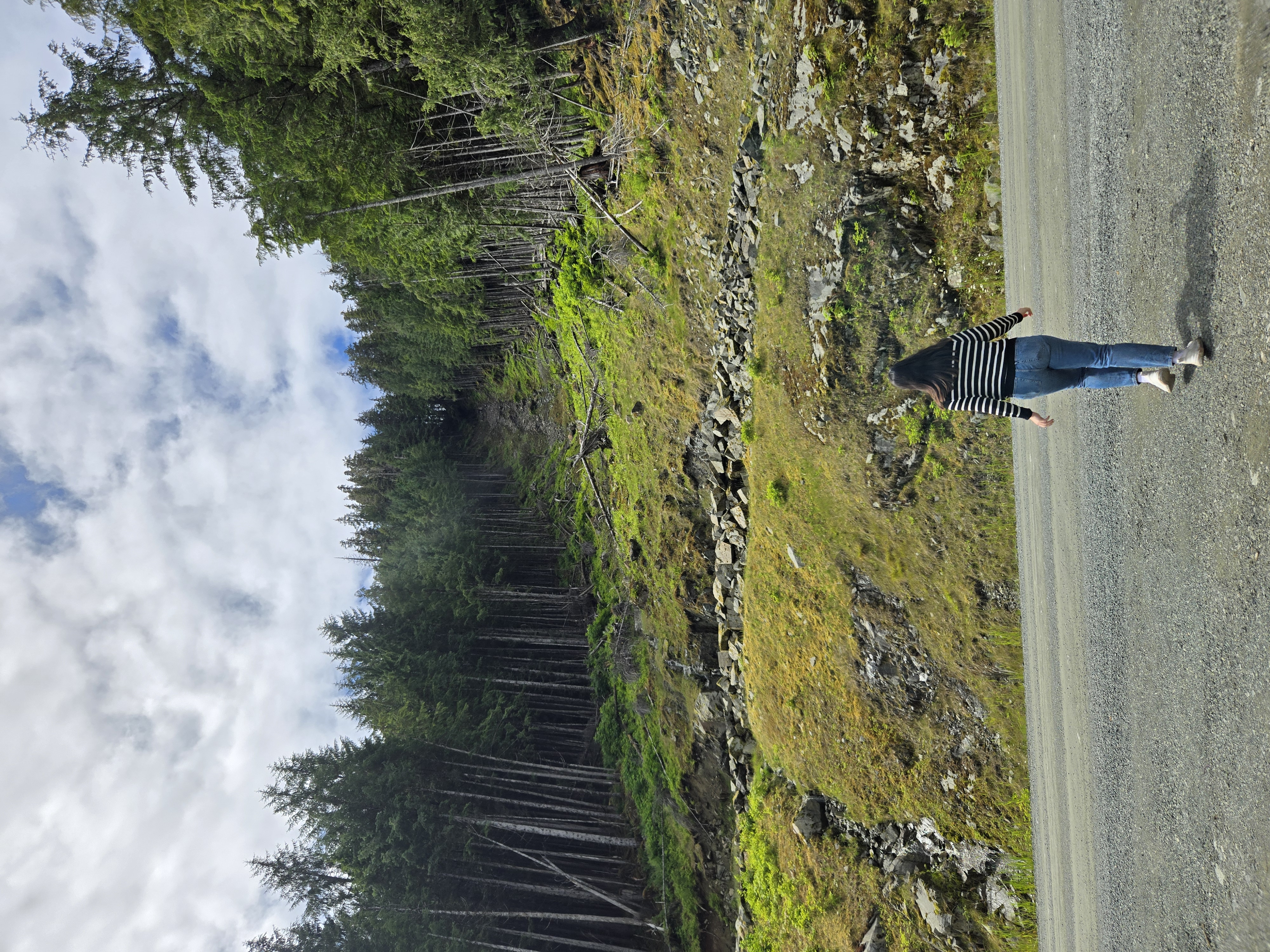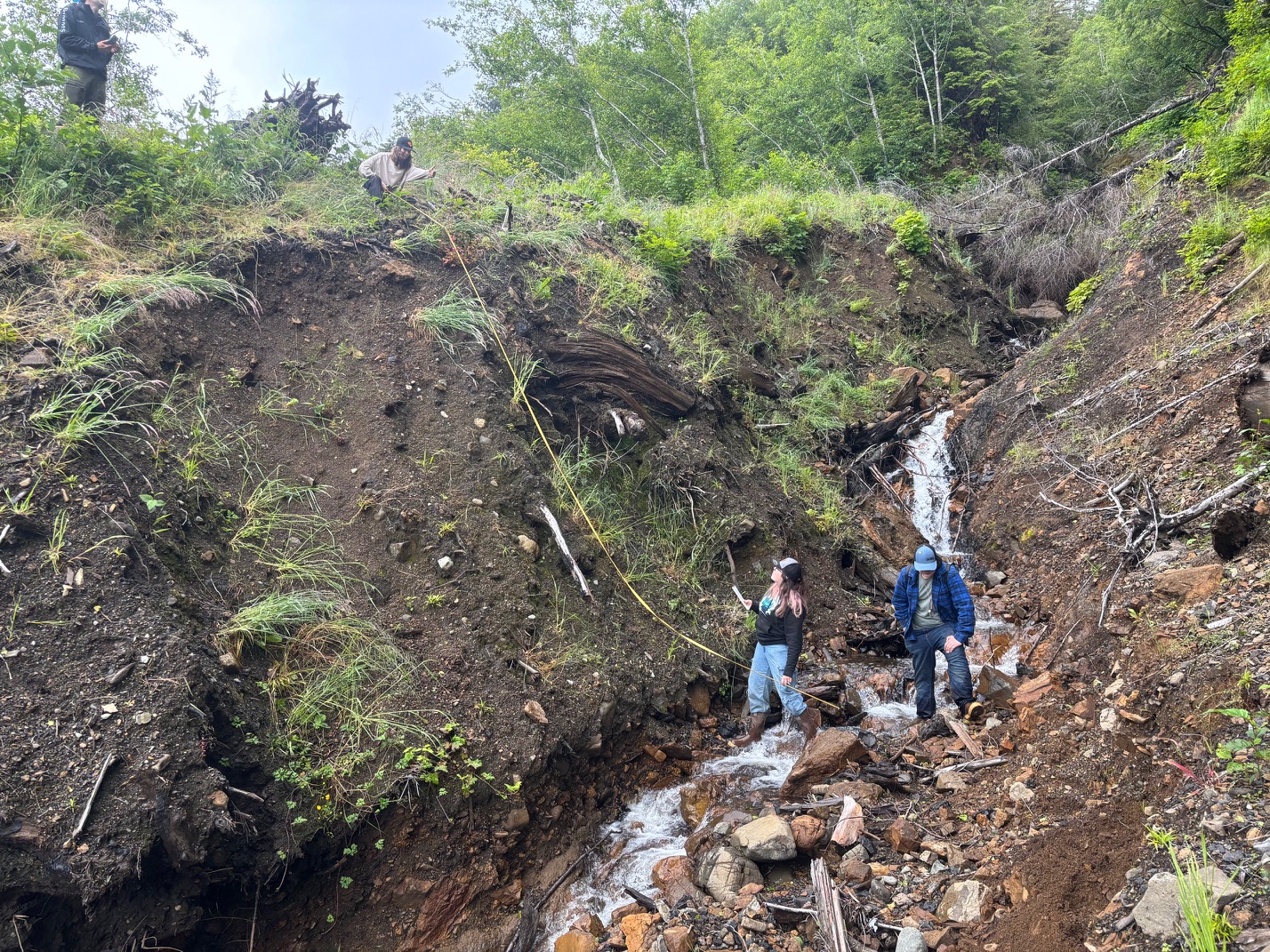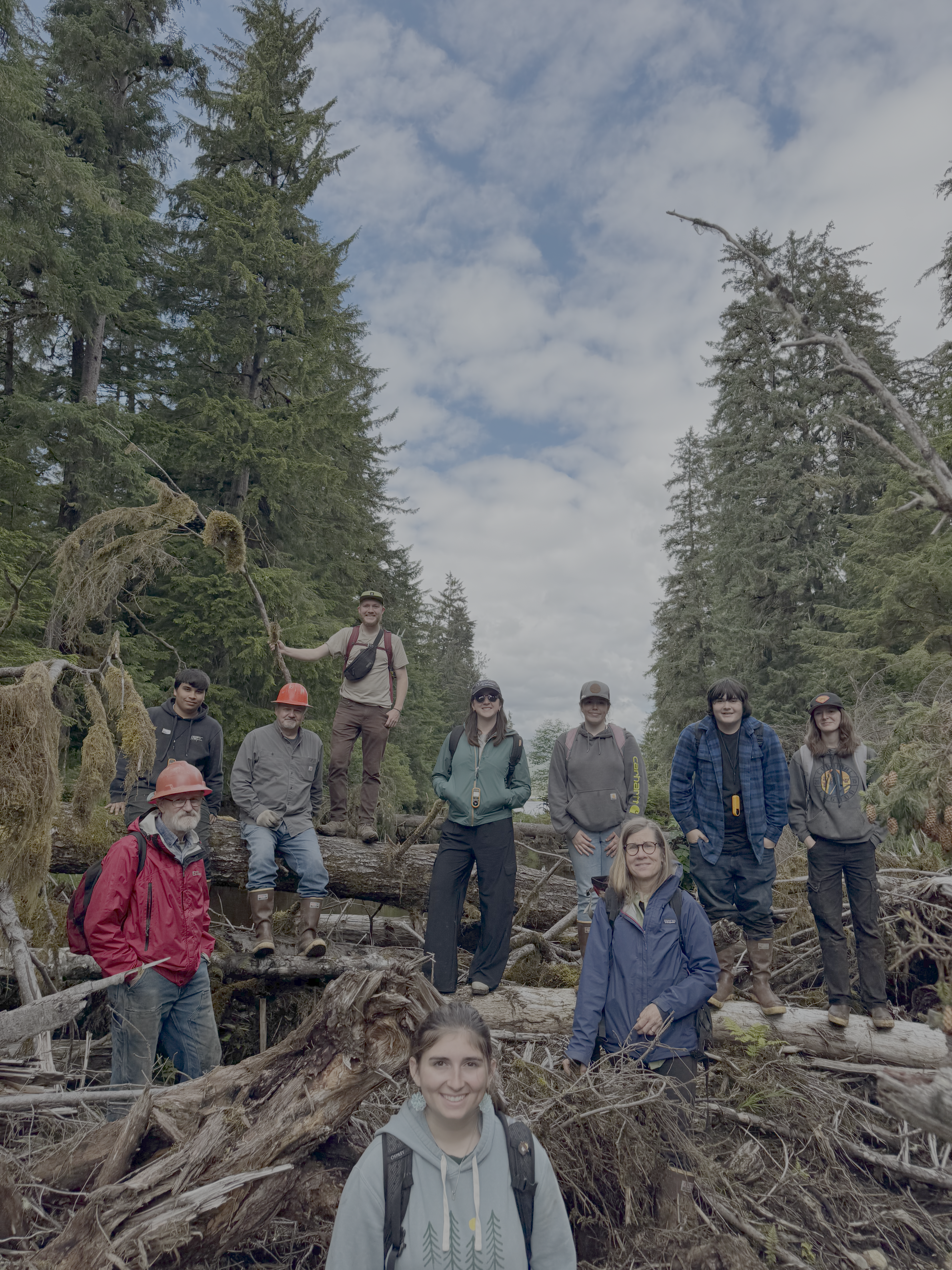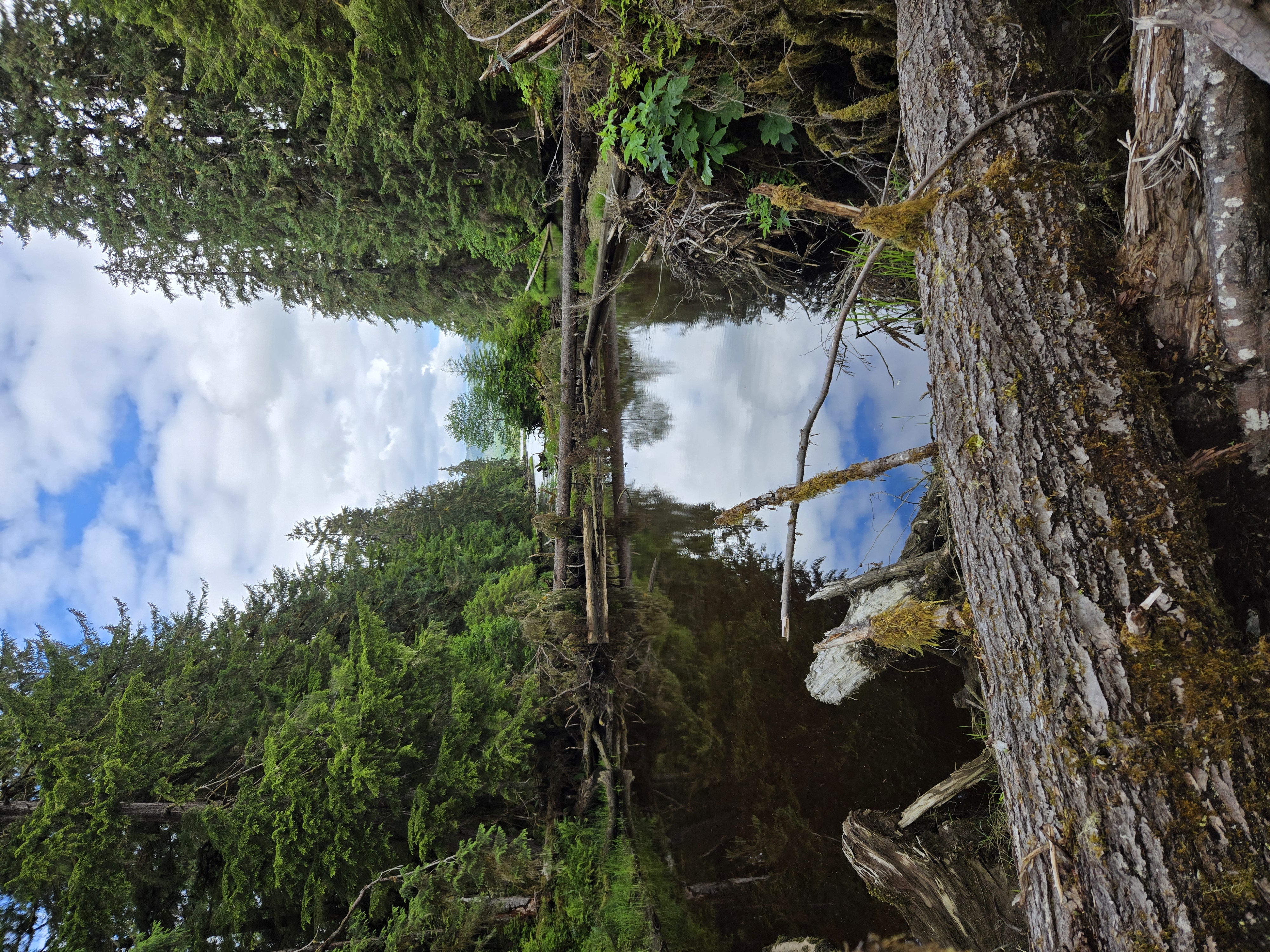Connecting the dots between storms and landslides: Two weeks of field science and youth engagement
Scientist in Residency Fellowship on Prince of Wales, July 2025, Deanna Nash, Ph.D.
🌧️ Atmospheric rivers and landslides on Prince of Wales
This summer, as a part of the National Science Foundation Coastlines and Peoples Program hub in Southeast Alaska, and Sitka Sound Science Center’s Scientist in Residency Fellowship, Dr. Deanna Nash spent two weeks on Prince of Wales island in Southeast Alaska, combining field science with community and youth engagement to better understand the impacts of atmospheric rivers and landslides. Our work focused on learning from the community while creating opportunities for young people to engage directly with science in their own backyard. The trip brought together Tribal and non-Tribal partners, scientists, and the Alaska Youth Stewards (AYS) program for a shared mission: gather critical data, share knowledge, and build lasting connections.

⛰️ Research and Fieldwork Highlights
Our fieldwork took us to four key landslide sites across Klawock, Craig, and Kasaan, each with its own story and scientific value. These included recent landslide locations, ongoing monitoring sites, and areas with a history of extreme rainfall events. Additionally, we installed a new rain gauge near the Kasaan water tower, where the data will be assimilated into NOAA’s models. We were able to identify the storm and characteristics associated with each of the slides we visited. All four were associated with an atmospheric river (AR) of various durations and intensities, and most occurred during rain-on-snow. Observations revealed that direction of the slopes varied, and was not always southwest facing, information that will feed directly into ongoing modeling and hazard forecasting efforts.
We developed a marble-and-jar analogy to explain landslide triggers: each slope is a jar, and factors such as slope aspect, prior snow, high water vapor during an AR, prolonged or intense rainfall, channelization, or logging history each add a marble. When the jar fills, a landslide occurs—not from a single factor, but from a combination.
Our fieldwork wasn’t just about the data—it was about doing science side-by-side with the community. Many of the sites we visited were identified with the help of local knowledge holders, whose insights into past events helped guide our research.
🌱 Youth Engagement with the Alaska Youth Stewards
A highlight of the trip was working with the Alaska Youth Stewards, a group of motivated local high school students who joined us in the field. They participated in everything from Craig Culture Camp to measuring wind with anemometers, learning about forecast tools developed with the National Weather Service, planting cedar seedlings in landslide scars, and verification of a landslide runout model. Their hands-on involvement wasn’t just about collecting information—it was about building skills in precipitation and landslide science that they can carry forward. The energy, curiosity, and dedication of these young participants highlighted the value of integrating youth engagement into scientific fieldwork. They brought fresh perspectives, thoughtful questions, and a deep connection to the land that strengthened the entire project.
🔗 Community Engagement
Beyond field days, we visited local community spaces to share our work, hear local experiences with extreme weather and landslides, and discuss next steps for the long-term goal of implementing an early warning landslide system. Interactive potlucks in Klawock and Kasaan allowed community members to ask questions, and see how local observations are connected to larger weather and climate patterns. Additionally, organized meetings with tribal and community leaders, and many other impromptu community interactions provided insights that will help guide our research. Community engagement is more than essential and means building trust through return visits, sharing results, checking on local efforts (e.g., rain gauge maintenance), and planning next steps together.
🪞Reflections & Next Steps
Community landslide science in Southeast Alaska comes with challenges—unpredictable weather (mini heatwave and bug attack, anyone?), logistical hurdles, and rugged terrain all tested our adaptability. But the rewards were just as great: the thrill of successful science collaboration, the laughter shared on a rainy “Sunnahae Sunday” hike, exchanging hand-picked salmonberry cobbler for local-grown lettuce, and the pride of seeing the Alaska Youth Stewards explain atmospheric rivers to community members as confidently as the scientists.
Next, we’ll analyze the data collected, share findings with the community, and plan return visits to deepen partnerships and expand youth engagement. These steps will help transform our observations into actionable knowledge that supports local decision-making and hazard preparedness. This trip reaffirmed the power of combining western science with community-driven engagement. The relationships built and the skills shared will continue to grow long after our two weeks on the ground.
Until next time, we’ll keep building knowledge, strengthening connections 🤝, and working together for a more resilient future.
💫 Acknowledgements
This work was supported by the National Science Foundation Coastlines and People Program: #2052972, as well as the Sitka Sound Science Center Scientist in Residency Program. I’d like to thank the Alaska Youth Stewards, Sierra Isaak, Emmit Aboudara, Megan Christopherson, and Xavier Lawnicki, and their coordinator, Cheyenne Thompson for their enthusiastic engagement. Finally, I’d like to thank Dr. Adelaide Johnson for her time coordinating logistics, meetings, and engagement activities during these two weeks. Di, I am so grateful that I had you as my guide and friend during this trip - your enthusiasm and support made this SIRF unforgettable.






